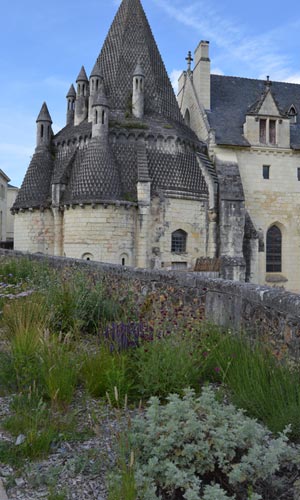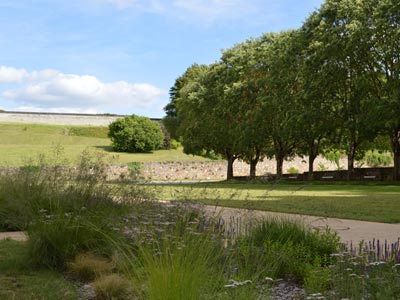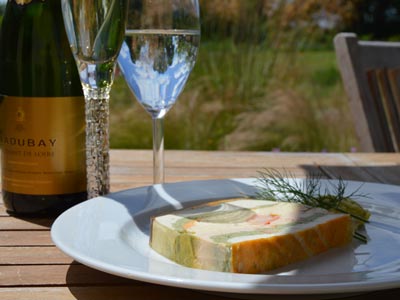Fontevraud Abbey
The insight into its historical gardens would not be complete without understanding the impact of Monastery gardens on the art of gardening and horticulture. The monks had great expertise in their knowledge of plants. Their efforts of establishing and maintaining their gardens for food, medicinal and spiritual purposes were well known. Working the soil was imposed by the monastic rule as an act of humbleness, penance and selflessness.
Fontevraud Abbey and its exceptional history are a striking example of that monastic philosophy. The gardens were established at the dawn of the 12th century by an itinerant preacher Robert of Arbrissel. He practiced “Syneisaktism”, a form of ascetism, a “spiritual marriage” where men and women live together in chastisty . The eloquence and personality of this preacher attracted crowds of several hundred people of all ranks. This large community was guided by Robert of Arbrissel and supported by Bishop of Poitiers. Together with numerous donations and concession of land, vineyards, mills, and even seigniorial rights of the local Angevin lords, the rapid construction of the Royal Abbey of Fontevraud was made possible.
The King of England, Henry II, his wife, Eleanor of Aquitaine, and their son, King Richard the Lionheart were buried here at the end of the 12th century. The monastery was disestablished during the French Revolution and was converted to a prison from 1804 to 1963. After this it was given to the French Ministry of Culture. following a major restoration, the Abbey was opened to the public in 1985.
The Gardens of Fontevraud Abbey.
Historically Fontevraud abbey has undoubtedly followed the tradition of Abbeys whose various gardens and functions were both material and spiritual. The records and plans from before 1789 mention gardens, terraces and basins around the Abbey Palace. From 1580, a bridge spanned the Chemin de Chinon. This enabled the Abbess Eleonore de Bourbon and the nuns to walk in the “big gardens” laid out around a former vineyard.
Around 1670, “the Queen of the Abbesses”, Gabrielle de Rochechouart, laid out the terraced gardens that lie between the gallery of the Palace and the Saint-Lazare Priory. These were linked, via a passage, to the interior court and the recently planted grand gardens of Bourbon. Despite not having classic ‘historic’ gardens that could have appealed to the curiosity of potential visitors, the site of Fontevraud illustrates its history through trial and error, experimenting with the vegetation all around the complex site.
It was initially the architect Vitry who suggested creating an apple orchard and series of terraces near Saint-Lazare. Then in 1970, he designed a chequerboard of four squares of lawn borders with boxwood for the larger cloister. In 1981, the gardens near the kitchens and the old infirmaries were redesigned with a medieval style.
The “Herbularius” or the garden of medicinal plants is reconstituted by the Yves Rocher Foundation to the south of the Grand-Moutier. The “Garden of sights”, created in 2004, was built as a miniature landscape and was designed to pay homage to Eleanor of Aquitane.










